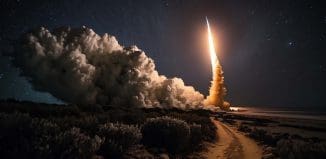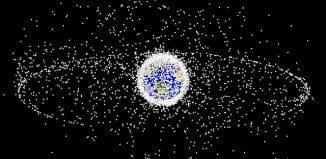Improvised Explosive Detection – New Approach
This post is also available in:  עברית (Hebrew)
עברית (Hebrew)
On the first floor of the Robert H. Mollohan Research Facility is a small team of researchers who are quietly developing a new, game-changing technology that could potentially eliminate the threat of the Improvised Explosive Devices (IEDs).
These weapons are typically hidden or buried in extremely difficult to detect areas and are responsible for thousands of injuries and deaths to coalition forces from 2001 to 2014, according to U.S. Department of Defense statistics.
The team of three who are trying to eliminate the growing threat are led by High Tech Foundation principal scientist Balakishore Yellampalle, and have been perfecting a device that detects trace levels of explosives from a distance using a mechanism called “deep ultraviolet laser beam.”
In this approach, Yellampalle told theet.com, that beam is pointed at a surface, and the scattered light is then reflected back, collected and analyzed by the sensor. A computer program then determines if the spectrum indicates the presence of explosives.
Another team member, Robert Martin, said the real benefit of the Deep Ultraviolet Resonance Raman Explosive Detector is how it could ultimately save lives. “If there’s a bomb in range, our system can help keep a warfighter out of harm’s way,” he said.
In order to find traces or potentially microscopic explosive elements, an operator would fire a laser signal from the detector to a target of interest. Almost instantly, the reflected light senses or reads materials on the target.
“Whether there’s background interference, sand, salt or whatever it is that overtop the target, we want to see if there is an explosive there. Then, the operator can hopefully take down whatever bomb threat there might be” Martin said.
However, the laser is more than just an intense beam of coherent monochromatic light. According to Martin, the system they’ve developed is smart. “It’s called, ‘spectroscopy,’” he said. “We shoot the sample, and the spectrometer sees the light that is reflected back. So, it looks at the whole spectrum of light”.
From there, he explained, the device actually detects all sorts of tiny bits of material from the laser light that is reflected back from the object. The real trick is how the system deciphers precisely what the laser is seeing. “We shoot a bunch of stuff and build a library,” Martin said.
The library Martin is talking about is a large, intuitive computer database the team developed. The data is made up of what all types of tested items would look like, such as salt, sand, sugar, water, TNT or even salt with TNT. Once the system recognizes or “remembers” more explosive substances, the recognition process is easier. meaning that the system gains knowledge and can apply it in later uses.
“So when we’re out in the field and get data, whatever it might be, we can see if it matches what we’ve seen before,” he said. The Deep Ultra Violet Resonance Raman Explosive Detector project is actually a continuation of an earlier one started in February 2012.
“We’ve been developing the technology in stages to meet our customer requirements,” Yellampalle said. “The current phase of the project was awarded May of 2016 for two years.”
The award phase the team is working on today is called phase three. During the second phase, the team developed a compact prototype they tested in the lab.
“Phase three of the project is getting the system down to 20 pounds or less and can be mounted on a wider variety of devices,” Martin said. Eventually, however, the plan is to shrink the detector down to a hand-held size, which Yellampalle said could make it more attractive to both military and civilian users.
“We’re building a portable detector as opposed to other competing technologies that are heavy,” Yellampalle said.




























